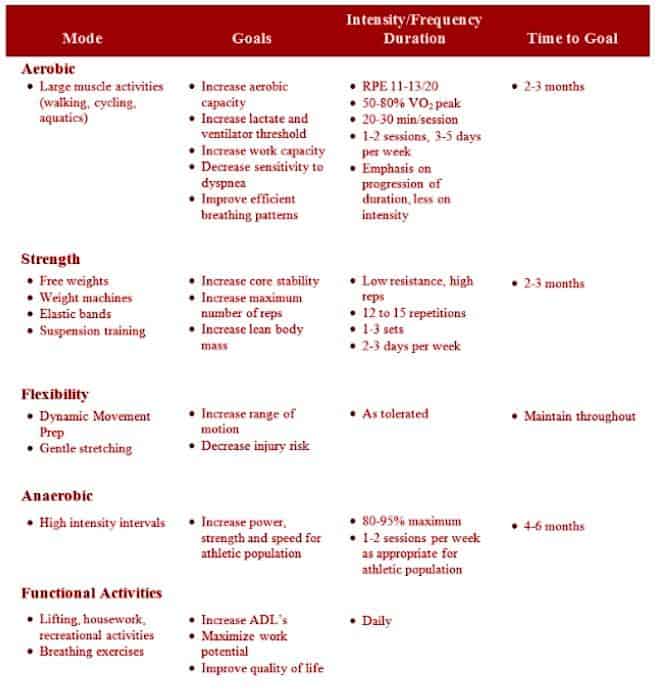Programming for Individuals with Asthma
Asthma has fast become one of the major health problems most of the developed countries in the world. It is a chronic respiratory disease characterized by intermittent obstruction to air flow resulting from any one of a number of different stimuli, both allergic and environmental. Characteristics of asthma include recurrent respiratory symptoms, variable airflow obstruction, the presence of airway hyperreactivity and chronic airway inflammation. Currently, it is one of the leading chronic childhood diseases in the United States. The variability of triggers varies greatly between individuals. For some individuals, asthma can be a chronic respiratory ailment while for others it is marked by symptomatic episodes triggered when provoked by stimuli such as allergens, stress or exercise.
There are a number of symptoms associated with an acute episode of asthma. They include coughing, chest tightness, shortness of breath, wheezing, and rapid breathing rate. There is still much to be learned about the etiology of asthma but it is widely accepted that both the environment and genetics play a role.
The effects of an asthma attack on exercise can be profound. In fact, one of the more common types of asthma is Exercise-Induced Asthma (EIA) and can be triggered during the onset of an exercise session. Luckily, the majority of literature suggests that not only is exercise safe for individuals with EIA, it may actually help control the frequency and severity of asthma attacks. There is little evidence to support the idea that exercise increases asthmatic symptoms and that sufferers should avoid regular physical activity.
Exercise-Induced asthma is characterized by a transient airway bronchoconstriction that begins anywhere from five to fifteen minutes following the onset of exercise. Athletes experience symptoms including shortness of breath, wheezing, coughing and chest tightness that may last for as long as thirty minutes following the cessation of exercise. Occasionally, individuals will experience a secondary reaction as long as 4-6 hours later.
Managing individuals with EIA depends on the severity of one’s asthmatic response. The amount of physical exertion required to evoke an attack is approximately 75% of the age-predicted maximum heart rate. In individuals who exercise at a submaximal level that is insufficient to elicit an asthmatic response, their exercise program is essentially unaffected. However, in those who have a more severe response or exercise at higher intensities, the exercise response is proportional to the ventilatory limitations imposed by the asthmatic episode. As such, individuals experiencing asthmatic episodes should be managed appropriately with training modifications and airway bronchodilator’s as appropriate.
EIA tends to affect individuals on a single exercise session perspective. When it is well controlled, asthma has no effect on adaptations to exercise. Participating in sports at any level is also acceptable in individuals with controlled asthma. Recognizing the potential triggers (cold weather, high pollen counts) will help in proactively moderating a training session or competition. Athletes undergoing pulmonary function stress testing can ascertain appropriate medical intervention. The use of short-term beta2– agonist inhalers such as Albuterol has been shown to reduce the risk of EIA. It is important to keep inhalers close during exercise sessions in the event of a sudden episode of EIA. Interestingly, in up to 40% of individuals with asthma, a refractory period exists within an hour of a mild asthma attack. During this asthma period, resuming exercise at the same intensity produces a much milder asthmatic event. Consequently, a thorough warm-up prior to endurance training or competition may be helpful in minimizing the onset of EIA.
The key to developing training programs for asthmatic clients is that periods of intermittent exacerbations and remissions influence their ability and response to exercise. Normally, the response to an exercise program is similar to those individuals without airway obstructive diseases. They will have positive responses to improved fitness, improved endurance, and improved musculoskeletal strength. However, developing an appropriate program is critical to the success for individuals meeting the goals associated with a training program.
Learn more about training Special Populations, including those with Hypertension, CAD, Type I and Type II diabetes, and asthma in the Personal Fitness Trainer Certification Course.







